Curious about using an RV wind generator while on the move?
As I’ve journeyed across the country, I’ve taken a closer look at RV energy sources, and today I’m excited to share what I’ve learned about the ups and downs of using a wind generator on the go.
Using an RV wind generator when driving is possible, but be aware of downsides like aerodynamic challenges, economic factors, noise disturbances, structural issues, and a complex setup process. However, it offers an additional energy source and can be more affordable per watt when considering installation costs.
Here’s a quick overview in case you’re in a hurry:
| Advantages: | Disadvantages: |
| Can charge even on cloudy days. | Aerodynamics and drag increase fuel consumption. |
| Potential for extra energy beyond solar or generators. | Structural and mechanical concerns; might face height/clearance issues. |
| Wind energy can be more affordable per watt in terms of installation. | Economic factors; the energy isn’t exactly “free” due to increased fuel consumption. |
| Potential noise issues depend on the model. | |
| Complex setup requires a deeper understanding of electrical systems. |
Pros Of RV Wind Generator While Driving
You Can Charge Even When It’s Not Sunny Outside:
How many times have we experienced this? We find the perfect spot; the views are stunning but overcast.
With a wind generator, you can stop worrying about cloudy days!
As long as there’s a breeze, you’re in business. It’s like having a backup plan that requires no extra effort.
Speaking of RVs, ever wondered if you live in an RV – what is your address? Well, we’ve got that puzzle solved for you!
Potential For Extra Energy
We have our generators, solar panels, and sometimes even shore power. But each of these has its own set of challenges. Generators are noisy and rely on fuel. Solar panels?
Fantastic, but the sun doesn’t shine all the time. The wind generator offers something different.
Imagine cruising down a scenic route, and as the wind brushes past, you’re not just enjoying the cool breeze but also generating electricity. It’s a sustainable and eco-friendly source, right up there with solar power, but with a twist.
This could be it for seasoned travelers, always looking for something more efficient and green.
If you’re new to the RV world or looking to upgrade, understanding the different RV classes can be helpful. Here’s a beginner-friendly guide explaining RV classes with a handy cheat sheet.
Wind Energy Is More Affordable In Terms Of Per Watt Installation:
| Energy Type: | Installation Cost: |
| Wind Energy | $1.50 / W |
| Solar Energy | $2.19 / W |
Now, let’s talk numbers for a second. In the grand scheme, wind energy can be more affordable than other sources. Per watt, it’s cheaper.
While we’re discussing wind energy costs, it’s also crucial to understand the overall cost of RV ownership. This will give you a broader perspective on where your money goes when maintaining an RV.
Cons Of RV Wind Generator While Driving
Aerodynamics and Drag
Ever put your hand out the window while cruising? That force pushing against your palm? That’s a drag. It’s air resistance. And while it might be fun, it’s a bit of a party pooper for our RVs.
Now, imagine adding a wind turbine to our beloved mobile homes. Sure, it sounds cool. But that’s another item the air is pushing against. Result? Increased fuel consumption.
Think of it like this: our RVs work overtime with more drag. It’s like running with a parachute on your back.
It might reduce your MPG by a decent chunk, meaning more stops at the gas station.
But that’s not all.
With that added drag, especially from something as tall as a turbine, our RVs can become unstable.
Structural and Mechanical Concerns
Picture this: cruising the highways, feeling the wind, approaching a low bridge. Oops! With a turbine up top, your RV may be too tall.
And those drive-throughs we love for a quick snack? They might be off-limits. That coffee run could turn into a literal roadblock.
So height and clearance is the first thing to consider.
Now, the durability of turbines. They aren’t just fancy fans. Think of the flying debris, those surprised strong winds or even a wayward bird. It’s a wild world out there, and turbines are susceptible to damage.
But it’s not just the turbine. Increased wear and tear on our trusty RV is a concern. Adding more structures means more stress, especially on our RV’s frame.
And we must remember safety. Imagine a sudden stop or even an accident…That turbine could become a major hazard. Plus, quick maneuvers to avoid overhead structures? Those could lead to some risky driving.
Economic Considerations
Wind energy while driving is free. Sounds great, right? Wind’s blowing, turbine’s spinning, free energy galore! Well, not so fast.
Here’s the deal. Our RV’s engine works hard when driving, using fuel to push against the wind.
Adding a wind turbine? It’s like asking our engine to run uphill. The energy isn’t “free”; it’s being borrowed from our burning fuel. Overall, running win turbines while driving the RV would be a net negative, factoring in the fuel costs.
Noise Issue
Ever sat outside on a quiet evening, trying to enjoy the serenity, only to be interrupted by the constant buzz of a nearby appliance? That’s what we’re talking about with some wind generators.
Now, some models whisper more softly than others, sure. But some models could produce a sound almost like a distant lawnmower on a summer’s day.
Setup Complexity
Setting up an RV to be just the way you want is already a task in itself.
Now, throw in the complexities of a wind turbine system, and you’re adding a whole new layer to the puzzle. It’s not just about bolting a turbine on your roof and hitting the road.
First, you must have a solid grasp of electrical systems. I’m talking about the nitty-gritty of power generation, conversions, and storage.
And here’s a thing to chew on: with all the brainy electrical engineers out there, why don’t we see commercial products for this setup? I mean, we’ve got gadgets for everything these days!
The absence of such products on the market hints at the idea: maybe it’s just not ready yet, or it’s not as efficient as we’d think. Food for thought, huh?
Speaking of advancements and innovations in the RV world, there are some must-have RV gadgets out there. These tools and gadgets can make your RV journey more comfortable and efficient.
What’s The Best Solution For Now To Charge Batteries?
Wind turbines have their charm, I get it. But already, there are so many efficient and effective alternative solutions in the RV world.
Vehicle Alternator:
This one’s a no-brainer. Instead of complicating things with a wind turbine, why not lean into what you already have?
It’s designed to charge batteries, and it does that job brilliantly. It’s efficient, it’s less complex, and it’s, well, already there!
Solar Panels:
Here’s a star player in the alternative energy game – solar panels. Many RVers swear by them, especially when they’re on the move.
Sun’s out? Your batteries are charging. Simple as that. They’re sleek and can blend in with the roofline, making your rig look even cooler.
Conclusion: Quick Word Before You Go!
Using a wind generator while cruising in your RV? Sounds super cool. But let’s be honest. As of now, the drawbacks overshadow the perks. You’re better off sticking with solar energy or your trusty RV alternator.
But hey, if you’re keen on wind energy, consider tapping into it while stationary. Who knows, we’ll have some innovative solutions in the future. Stay tuned…
Pro-Tip: Throughout this article, I’ve used some specific RV terms. If you’re unfamiliar with some of the terminology, you might find our comprehensive guide on RV terms and definitions useful.
And if you’re a retired couple looking for a smaller, more manageable RV option, there are some fantastic fifth-wheel options that could be ideal.


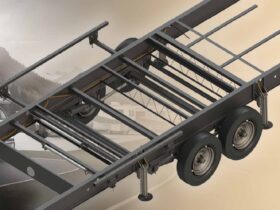
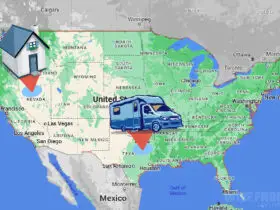
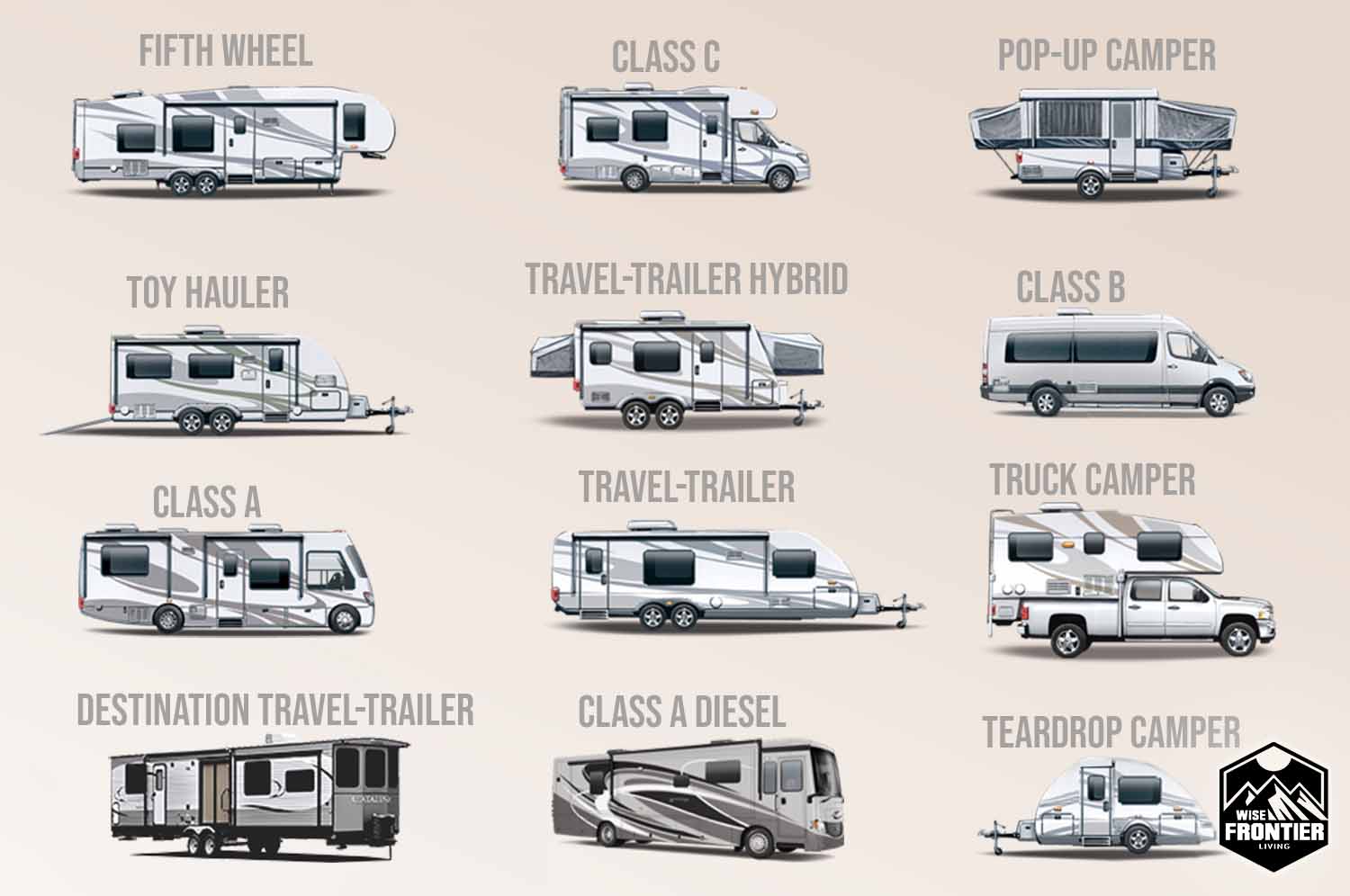
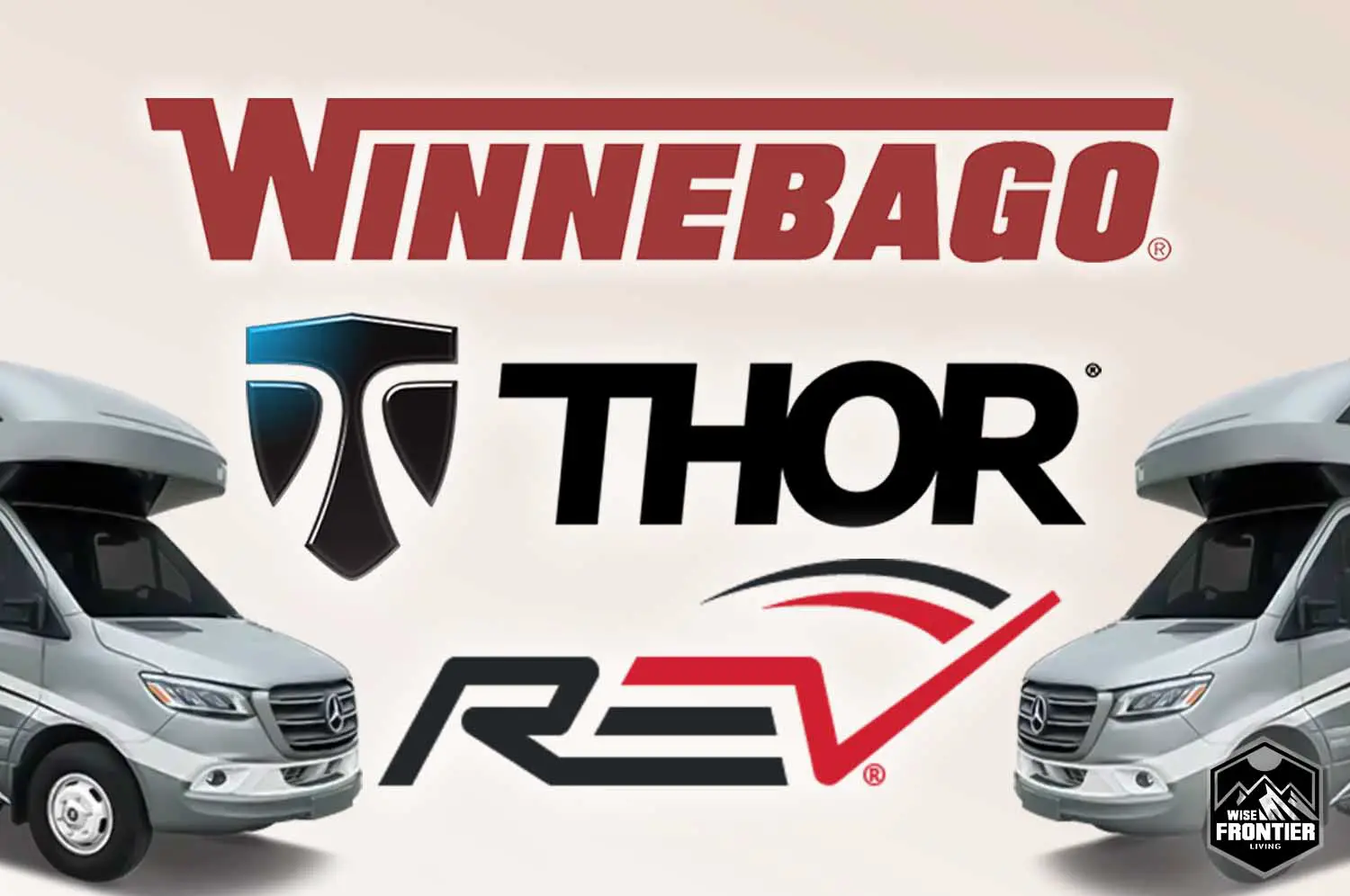
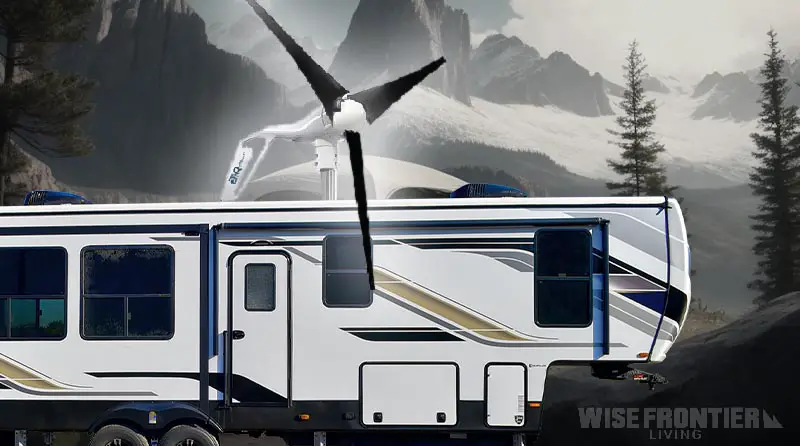
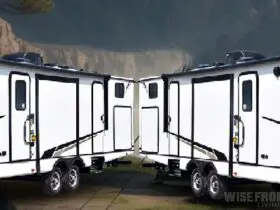
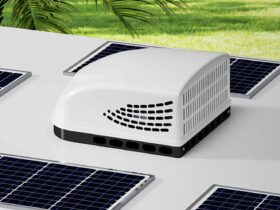
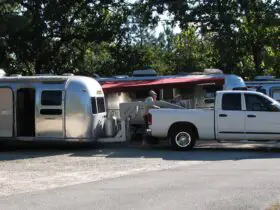
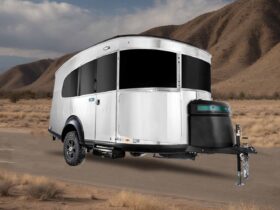

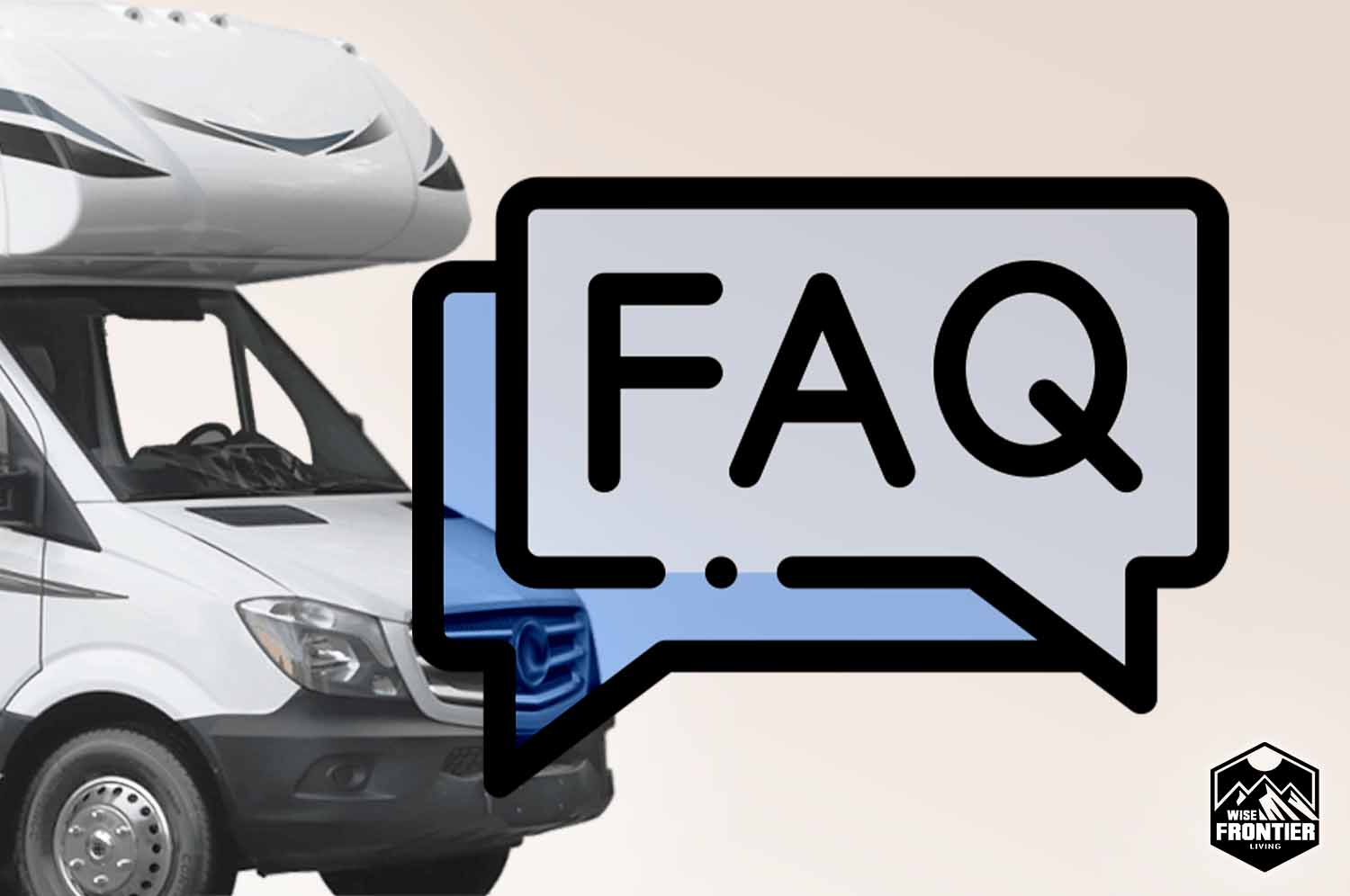
Leave a Reply